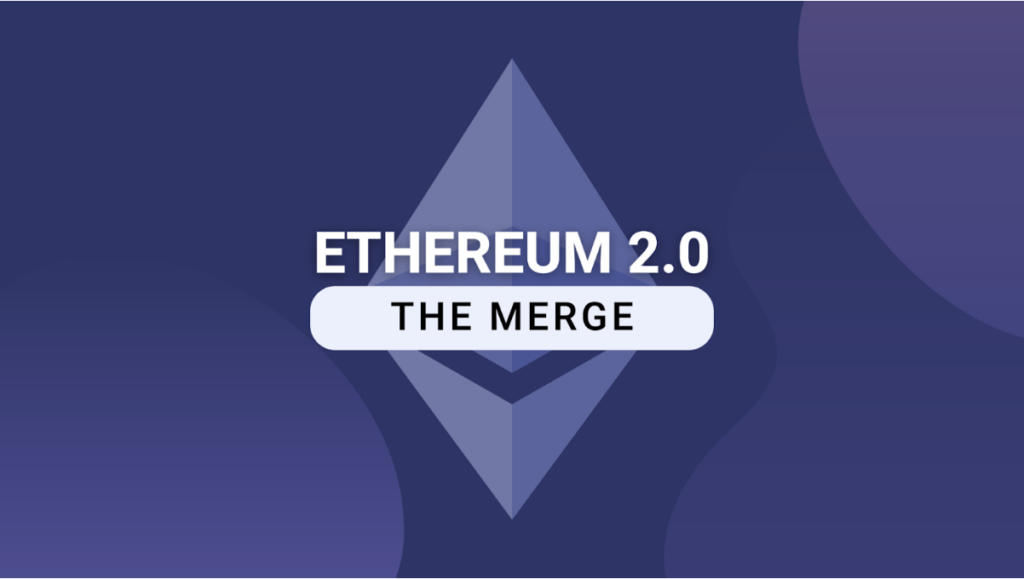Social media buzzes with the coming of the new Ethereum merge, also known as ‘The Merge.’ Users, especially crypto miners, have been faced with mixed reactions, and the ETH coin itself has responded to a new trust, hitting over $2,000 since its last record in May. Headlines have also been indicative: Ethereum 2.0 will be a significant upgrade from Ethereum 1.0.
At the DevCon4 event in Prague in 2018, Vitalik Buterin unveiled the merge. Then, he dubbed it ‘Serenity’ and described the roadmap to Ethereum 2.0 as a ‘cohesive whole.’ That was four years ago, and much has happened ever since.
With the blockchain having finalized its last testnet earlier this year, there is new hope for Ethereum lovers. Some users call it a new revolution. Others feel it is simply an answer to the blockchain trilemma.
Whatever it means is substantial, and there’s a need to keep up with this significant change in the crypto industry. What is the Ethereum merge about, and what do you need to know? Read on.
What is Ethereum 2.0 (The Merge)?

Ethereum 2.0 integrates the Ethereum blockchain onto an architecture that runs a proof-of-stake protocol. Think of this as two partners needing a wedding: the Beacon chain and the Mainnet chain. In the merge, the Beacon chain will be connected to the Mainnet to achieve some levels of validation.
A common misconception is that Ethereum 2.0 will reduce gas fees, but that’s not true. The merge is simply a wedding of two consensus protocols. Factors that will impact gas fees are scalability solutions such as sharding and roll-ups. For that to happen, there would have to be another series of upgrades to the merge.
Another misconception is that there would be a new Ethereum token attached to Ethereum 2.0. Of course, that’s not true. The ticker Eth 2 or Eth 2.0 as a new coin or token is a mere fallacy. Ethereum remains Ethereum. The merge is only a transfer of data and functionality.
What is Being Merged?
The proof-of-work (PoW) and the proof-of-stake (PoS) protocols are being merged in simple terms. These protocols constitute the core definition of the merge. However, they are distinctly part of their blockchain: the Ethereum Mainnet (Ethereum 1.0) and the Beacon chain (Ethereum 2.0), respectively.
This merge will represent some pseudo-hybrid consensus protocol. In effect, while new blocks will be actively added to the chain via its new consensus PoS, the initial consensus protocol of the project PoW will serve as a database system, storing its past transactions.
Given this direction for the project, a lot is set to change in the workings of the blockchain. But essentially, this integration is designed to enhance users’ experience dramatically and cut out the regressive flaws of Ethereum 1.0.
The goal, by extension, is to recreate the project’s future to enable it to meet the changing ballgame of DeFi, and the crypto industry at large, especially concerning eventual speed and efficiency.
Proof-of-Work to Proof-of-Stake
Proof-of-work (PoW) and proof-of-stake (PoS) are two ways of validating a blockchain transaction. In PoW, miners use computers to solve complex mathematical problems and add blockchain transactions. In PoS, it doesn’t matter how much computing power you have; instead, it matters how many coins you own to vote.
Ethereum 1.0 runs on a PoS consensus protocol with pros and cons. For example, one benefit of this protocol is that it’s more decentralized than other systems—anyone with a computer can participate in mining new blocks and keeping the network secure. On the downside, however, PoW mining uses an immense amount of computing power and energy as miners compete for block rewards.
To address these issues with Ethereum 1.0, the team behind Ethereum 2.0 has decided to implement a new consensus protocol called PoS. This will allow them to reduce energy consumption while eventually increasing scalability through sharding (splitting data into smaller chunks so they can be processed more quickly).
When is the Merge?
Ethereum 2.0, the long-awaited next version of the Ethereum blockchain, is expected to be merged by September 2022 at the time of this writing. However, there is no guarantee that it will be merged precisely then, as the date is only a forecast. Ethereum 2.0 may come sooner or later than the date.
Who Benefits From the Merge
Three sets of people will benefit from Ethereum 2.0 (The Merge). They can otherwise be called the ‘stakeholders.’
The Developers will have a whole new toolbox, allowing them to build more complex decentralized applications (DApps). This means they can focus on building their dApp, rather than worry about smart contract programming or consensus mechanisms
The Investors can launch their tokens (or ‘coins’) on top of the Ethereum blockchain without worrying about technical limitations as much as they previously would have.
The Users’ conversions of currencies under the blockchain will be more efficient and easily accessible than previously. It also gives users more privacy and security in their transactions.
Ethereum After Ethereum 2.0
Ethereum 2.0 is a long-term solution with benefits to the Ethereum community. After the launch, users and developers will still use Ethereum 1.0 for some time while transitioning to the new technology. However, it’s unclear how long this process might take and whether or not there will be any issues along the way. But what’s certain is that Ethereum 1.0 will be part of Ethereum 2.0, and all your assets will be intact but more secure on the new blockchain.
What Else to Know?
Ethereum 2.0 (The Merge) marks a critical turning point for Ethereum since its launch in 2015. The upgrade will significantly shift how the network operates for miners. The computational power and minting energy will be replaced with validators. Regardless of the changes, transaction confirmation on Ethereum will remain the same, as well as smart contract execution.
